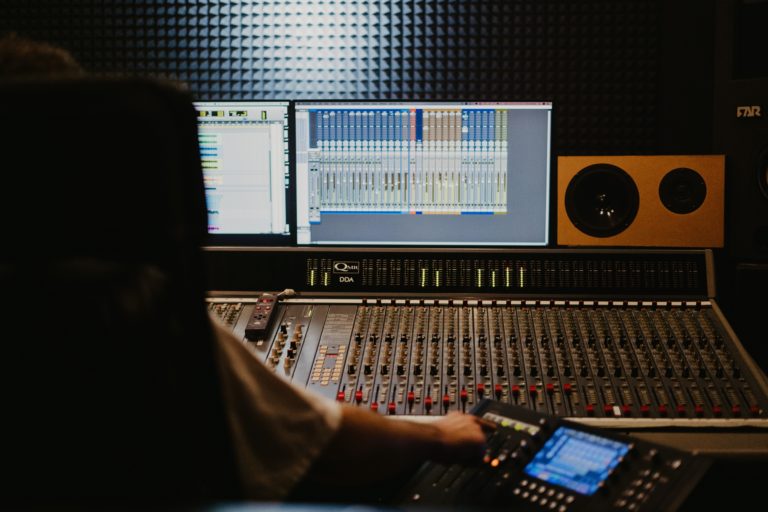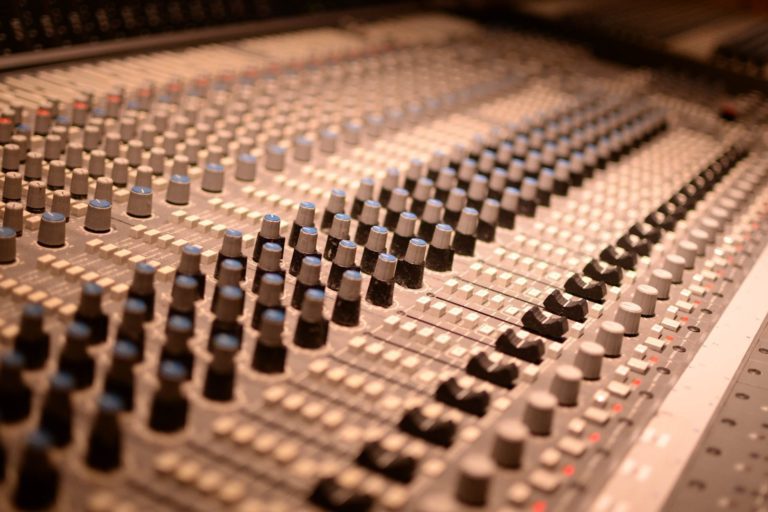Are you an aspiring musician or artist wanting to collaborate with other creatives but need help figuring out how? Remote music production has become increasingly popular due to the pandemic and improved technology, but it can be daunting for those who are used to local production. Don’t worry – this guide will provide you with all the information you need on remote music production to get the best record possible. We’ll cover everything from remote music production and its benefits to tips on how to do it successfully, as well as some real-world examples. So let’s get started!
The Earliest Remote Collaborations
Music production has come a long way since the early days of collaboration over satellite feeds or other remotely accessible technologies. Tracks created via remote connections by renowned musicians in the 1990s have become some of the most iconic pieces in music history. As technology continues to evolve and makes more tools available, remote music production will likely become even more popular and successful in years to come.
In the iconic song “Come with Me,” Jimmy Page and P. Diddy demonstrate the power of remote collaboration by working from different locations to create their musical masterpiece. The two produced a unique sound by merging their talents using satellite feeds and separate recordings.
Collaboration between artists can take different forms; Death Cab for Cutie and The Postal Service are two groups that have embraced remote methods to make music. The latter derived its moniker from its methods, which involved sending individual tracks by conventional postal mail.
Local Sessions: The Good & Bad
For many creative professionals, recording using analog equipment in a local studio can be preferable to collaborating remotely or digitally. We understand the needs of these artists and the reasons for their preference for this type of recording.
Here are some pros and cons of using local session recordings:
Pros:
- If you’re using a session studio for recording, you don’t have to worry about the acoustics. Most studios have soundproofing, pop filters, and other tools to ensure a high-quality audio recording.
- Professional studio sessions provide access to some of the best audio gear and software on the market.
- Your engineer is feet away for closer communication.
- If you’re looking to tap into your creative side, you don’t have to worry about the technical details – focus on the creative aspect.
Cons:
- Time is of the essence, and sessions must be completed by their respective deadlines to minimize your expenses.
- Recording sessions come with additional costs, including expenses for travel, rehearsal spaces, and other fees (such as mastering, mixing, and paying for multiple takes).
- When using studio gear, you won’t have the same flexibility as if you were utilizing your equipment.
Why Remote is the Go-To Today
Remote music production has seen a massive boost in popularity due to technological advancements and the increasing accessibility of internet-based services. With remote collaboration, artists and producers can connect from anywhere in the world, making it simple to record, produce, mix, and even master tracks without physical barriers or wait times. Remote music production is an excellent way for unsigned and major label artists to get the sound they need on their recordings efficiently.
Pros:
- Working remotely allows teams to collaborate efficiently and save time.
- The long-term financial cost is relatively cheaper.
- If you have access to the right gear, you’ll have complete flexibility in terms of control.
- Technology has made real-time communication more straightforward and more accessible than ever before.
Cons:
- Working as a team can be difficult when it is done remotely, especially when it requires real-time collaborative processes.
- You may not have access to the same high-end professional recording gear as what you would find in a traditional recording studio.
- Recording in a home studio may be more cost-effective than going to a professional studio, but it often takes longer to reach the same level of quality.
Music production is no longer confined to the physical workspace, with technological advances making it possible for producers to work remotely. This has enabled producers to access a broader range of engineering talent while allowing them to take on opportunities outside their local vicinity. Although both pros and cons are associated with remote music production, its increasing incidence suggests that this method will continue to be an essential part of the music industry.
The Essentials of Remote Music Collaboration
Remote music production is rising, allowing music producers to collaborate more conveniently. If you are interested in making the transition from working in a studio to remote music production, there are a few essential steps that you need to take. Read on to familiarize yourself with the basics so your transition can be smooth and successful!
Technology has dramatically changed how music production is done. Computers such as Macs and PCs are popular tools used in the studio. For remote collaboration, it’s important to have a reliable high-speed internet connection. This technology allows producers, session singers, and primary artists worldwide to connect easily and collaborate on creating hit records.
Connecting with the Creatives
With the advancement of digital technology, remote music collaboration is becoming increasingly accessible. Through programs like video chat and audio streaming, musicians worldwide can join forces and create art together. Additionally, replicating sounds through computers has made it easy for producers to access a variety of tones and textures via digital synthesis. Remote collaboration takes music-making to another level by breaking down geographical boundaries.
There is no need to travel when undertaking a remote music production session; everything can be heard and discussed as if you were in the studio. This means you can give your feedback directly, ensuring that any changes or additions you would like to make can be implemented without delay.
Record, Share, Repeat
When collaborating with people remotely, there are many ways to share the music that you create. Record your tracks and submit them to those who are part of the project. If all parties are content with the product, then production can continue. Generally speaking, here is what you need to do to collaborate successfully:
- Record your tracks in a DAW.
- Export your files as wave files.
- Upload and send files using a file-sharing platform like DropBox or WeTransfer.
- Repeat steps as needed.
Software can be incredibly useful for collaboration on musical projects, allowing users to easily share files and even record in real time. With a Digital Audio Workstation (DAW), multiple users can easily work together, with each participant automatically having access to the same copy of the project.
If you’re aiming to create a multi-track recording – such as different guitar and vocal tracks – then it’s essential to send your mix without additional effects. This will ensure that the recording will be as true to your original idea as possible. So when you record multiple tracks, consider sending the unedited mix of these tracks.
Share your DAW project file with your music producer to finalize the track. Your producer will mix and apply any necessary elements like Auto-Tune, effects, and processing to complete the song.
Sharing & Communication Platforms to Consider
Plenty of tools and platforms exist specifically designed to facilitate communication and sharing among remote team members. Some popular platforms include Slack, Microsoft Teams, Zoom, and Google Drive.
1. DropBox Replay
DropBox Replay is an ideal tool for remote collaboration since it allows users to securely upload and download audio and video files without downloading them on each user’s device. Video creators initially used the service, but the ease of access and secure architecture makes DropBox Replay ideal for audio sharing and collaboration.
2. Zoom
Zoom has become the go-to platform for remote collaboration with its ability to hold virtual meetings and recording sessions. Since the pandemic of 2020, Zoom has enabled various artists, musicians, producers, and studios to work together on projects – even working on some of the century’s most successful hits, such as “You Will Be Found” from Dear Evan Hansen’s movie/musical.
3. Audio Movers
Audio Movers’ ListenTo plugin lets remote collaborators work together in real time. It’s a standalone program, and it also works as a plugin within Digital Audio Workstations (DAWs) to make it easier to connect different users. All someone needs are the link they are provided with, and they can listen live in 320kbps AACCD quality sound. The pricing plan is made with collaboration in mind and will cost $10/month for ten users or $17/month for up to 150 people to connect at once.
Final thoughts on remote music production
Relative to in-person music production, remote music production has a lot of advantages – not just during a pandemic. With technology improving all the time, there’s no reason why artists shouldn’t at least give it a try. If you want to get into remote music production but don’t know where to start, this guide provides everything you need to know and some real-world examples. And if you still have more questions or want to try it, contact us, and we’ll be happy to help you.


